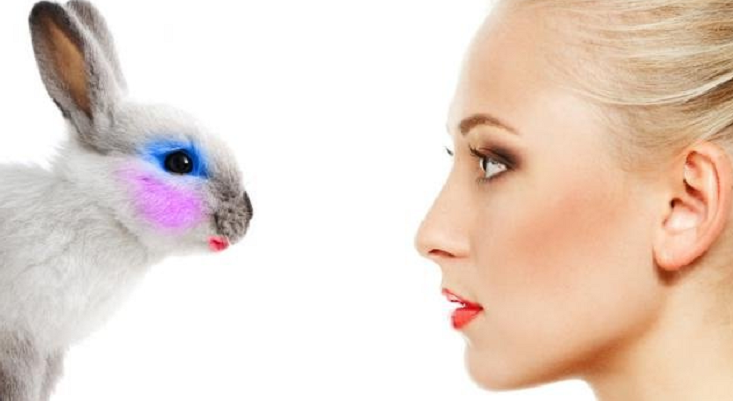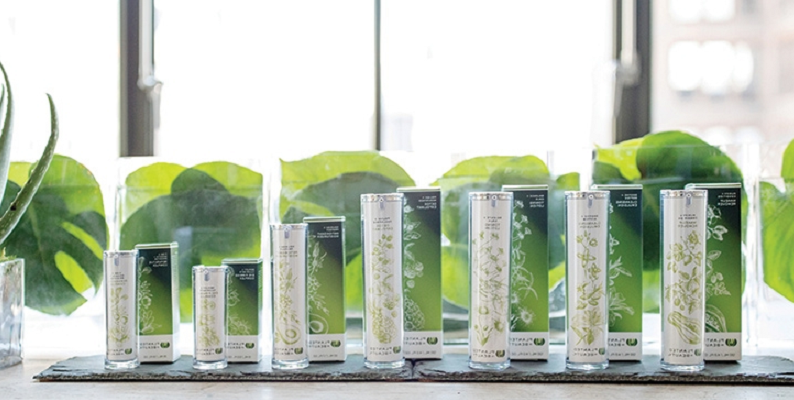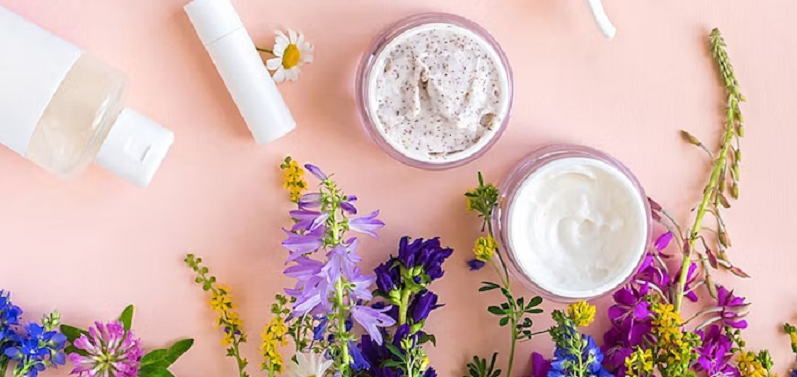
As consumer awareness grows about the ethical, environmental, and health aspects of the products we use, there is an escalating demand for cleaner, more conscious choices. Cosmetics have been part of human culture for millennia, evolving in ingredients and application over time. Traditionally, many cosmetics have relied on animal-derived ingredients, often without consumers being aware of what they are actually applying to their skin. However, with the rise of the plant-based movement, the tides are turning. We’re not only seeing a shift in dietary habits but also in our skincare and beauty regimens.
Contents
- Introduction to Cosmetics Ingredients
- The Importance of Switching to Plant-Based Ingredients
- Common Animal-Derived Ingredients in Cosmetics
- Plant-Based Alternatives to Animal-Derived Ingredients
- References
Introduction to Cosmetics Ingredients
As consumer awareness grows about the ethical, environmental, and health aspects of the products we use, there is an escalating demand for cleaner, more conscious choices. Cosmetics are products applied to the body, especially the face, to enhance appearance. They encompass a wide range of products, including makeup, skincare products, haircare products, and fragrances.
History and Evolution of Ingredients Used in Cosmetics
The use of cosmetics dates back thousands of years. Ancient Egyptians, for example, used kohl to line their eyes, while the Greeks used olive oil as a moisturizer. Over the centuries, the ingredients used in cosmetics have evolved significantly. During the Victorian era, for instance, many cosmetics contained harsh and sometimes toxic ingredients. As time went on, the industry started to incorporate more refined ingredients, many of which were derived from animals.
Animal-derived ingredients have been a staple in cosmetics for a long time. They were often used due to their effectiveness in achieving desired textures or results. However, as science has advanced and awareness of animal welfare and environmental sustainability has increased, there is a growing interest in finding alternatives to these ingredients.
The Impact of Animal-Derived Ingredients on the Environment and Ethics
Using animal-derived ingredients in cosmetics is not without its consequences. The beauty industry is one of the major contributors to animal testing, which raises ethical concerns. Additionally, the production of animal-derived ingredients often has a substantial environmental impact, including deforestation and high greenhouse gas emissions associated with animal agriculture.
Introduction to Plant-Based Alternatives
In response to the ethical and environmental issues associated with animal-derived ingredients, there has been a significant shift towards plant-based alternatives. These alternatives often have similar, if not better, properties compared to their animal-derived counterparts, without the associated ethical dilemmas and environmental degradation.

The Importance of Switching to Plant-Based Ingredients
It’s imperative to understand why making the switch to plant-based alternatives is not just a trend, but a necessary step toward a more sustainable and compassionate world.
Ethical Considerations
It’s no secret that the beauty industry has long been under scrutiny for its practices concerning animal welfare. Making the switch to plant-based ingredients is not only good for the environment but also an ethically responsible choice [1].
Cruelty-Free Practices
One of the significant ethical considerations is the cruel treatment of animals that are often associated with sourcing animal-derived ingredients. For instance, many animals are kept in inhumane conditions and undergo painful procedures to extract ingredients. Additionally, animal testing is still prevalent in the cosmetics industry. By choosing plant-based alternatives, you are taking a stand against these cruel practices and supporting a more humane approach to beauty.
Veganism and Consumer Choices
As veganism gains popularity for its ethical stance against animal exploitation, it’s natural that this philosophy extends beyond diet to include beauty products. Choosing plant-based cosmetics aligns with vegan values and sends a message to the industry that consumers prioritize compassion over convenience.
Environmental Impact
Beyond the ethical considerations, there’s an undeniable environmental component to this conversation. The production of animal-derived ingredients often has a much higher environmental footprint than their plant-based counterparts [2].
Sustainability of Plant-Based Ingredients
Many plant-based ingredients are more sustainable as they generally require less water, land, and energy to produce compared to animal-derived ingredients. For instance, growing almonds for almond oil is typically more resource-efficient than raising sheep for lanolin.
Reducing the Carbon Footprint
Animal agriculture is one of the leading contributors to greenhouse gas emissions, which play a significant role in climate change. By opting for plant-based ingredients, you are effectively reducing your carbon footprint and contributing to the fight against climate change.
Health Benefits
Making the switch to plant-based ingredients is not only better for the planet and animals but also beneficial for your health [3].
Avoiding Animal-Derived Allergens
Some individuals are allergic to animal-derived ingredients, and even if not allergic, some of these ingredients can be irritating to the skin. Plant-based alternatives often have fewer allergens and are gentler on the skin.
Natural Nutrients and Skin Benefits
Plant-based ingredients often contain a higher concentration of essential vitamins, antioxidants, and other nutrients that are beneficial for the skin. For example, coconut oil is known for its moisturizing properties, and green tea extract is celebrated for its anti-aging benefits.

Common Animal-Derived Ingredients in Cosmetics
Before we delve into the plant-based alternatives, it’s important to familiarize ourselves with some of the common animal-derived ingredients that are often found in cosmetics. Many consumers are not aware that some of the ingredients in their favorite products come from animals. Here is a list of some of the widely used animal-derived ingredients in cosmetics.
Beeswax
Beeswax is probably one of the most commonly known animal-derived ingredients. It is used as a thickening agent and helps to solidify certain products such as lip balms and mascaras.
Lanolin
Lanolin is a waxy substance that is derived from the sebaceous glands of wool-bearing animals, such as sheep. It’s known for its moisturizing properties and is commonly found in lotions, creams, and lip products.
Collagen
Collagen is a protein that is often associated with youthful skin. In cosmetics, it is usually derived from animal connective tissues, such as the skin, bones, and ligaments of cows or fish. It’s frequently used in anti-aging creams and lotions.
Keratin
Keratin is another protein that is derived from the feathers, horns, and hooves of various animals. It is most commonly used in hair products due to its ability to strengthen and smooth hair.
Carmine
Carmine, also known as cochineal, is a red pigment that is derived from crushed cochineal insects. It’s frequently used to color lipsticks, blushes, and eyeshadows.
Squalene
Squalene is a naturally occurring compound found in the liver of sharks. It’s known for its moisturizing properties and is often used in face creams and serums.
Gelatin
Gelatin is derived from the boiled bones, tendons, and skin of animals. It’s used as a thickening agent in cosmetics, especially in creamy products and face masks.
Casein
Casein is a protein derived from cow’s milk and is used in various hair and skin products for its binding properties.

Plant-Based Alternatives to Animal-Derived Ingredients
As we’ve established the ethical, environmental, and health concerns associated with animal-derived ingredients in cosmetics, it’s time to introduce the plethora of plant-based alternatives available. These alternatives often have similar or even superior properties compared to their animal-derived counterparts.
Alternatives to Beeswax
When looking for a plant-based thickening agent, several alternatives can effectively replace beeswax in cosmetics [4].
Candelilla Wax
Derived from the leaves of the Candelilla shrub, this wax is often used as a vegan alternative to beeswax. It’s perfect for thickening products and has excellent emollient properties.
Soy Wax
Soy wax is derived from the oil of soybeans. It’s a great alternative to beeswax, especially in solid products like lip balms and is known for its smooth application.
Carnauba Wax
Sourced from the leaves of the Brazilian Carnauba palm, this wax is often used in mascaras and eyeliners due to its smudge-resistant properties.
Alternatives to Lanolin
Lanolin is used for its moisturizing properties, but plant-based alternatives can offer the same benefits without exploiting animals.
Shea Butter
Shea butter is derived from the nuts of the Shea tree and is known for its deeply moisturizing and nourishing properties, making it an excellent alternative to lanolin.
Coconut Oil
Coconut oil is another plant-based moisturizer that can replace lanolin. It’s versatile and is used in a wide range of cosmetic products.
Olive Oil
Olive oil is a natural moisturizer that’s packed with antioxidants. It’s a great substitute for lanolin in creams and lotions.
Alternatives to Collagen
There are several plant-based sources of proteins and amino acids that can effectively replace animal-derived collagen in cosmetics.
Soy Protein
Soy protein helps to strengthen and moisturize the skin. It’s often used in anti-aging products as a plant-based alternative to animal collagen.
Algae Extract
Algae extract is known for its skin-tightening properties and can be used as a collagen alternative. It is also rich in vitamins and minerals that are beneficial for the skin.
Alternatives to Keratin
Hair products often contain keratin, but there are plant-based alternatives that offer similar benefits.
Almond Oil
Almond oil is known for its ability to strengthen and smooth hair, making it an effective plant-based alternative to keratin.
Wheat Protein
Wheat protein can be used in shampoos and conditioners as a plant-based alternative to keratin. It helps to strengthen hair and reduce breakage.
Alternatives to Carmine
Carmine is used for its pigment, but there are plant-based colorants that can be used as alternatives [5].
Beet Juice Powder
Derived from dried beetroot, this powder offers a range of red hues and is a wonderful alternative to carmine in lipsticks and blushes.
Red Cabbage Extract
This extract can provide a vibrant purple-red hue, which is an excellent option for coloring cosmetics without relying on animal-derived ingredients.
Alternatives to Squalene
Plant-based oils can replicate the moisturizing properties of squalene without deriving it from sharks.
Amaranth Seed Oil
This oil has a similar molecular structure to squalene, making it an effective moisturizing alternative.
Olive Squalane
Squalane can also be derived from olives. It’s equally moisturizing and a more ethical and sustainable alternative to shark-derived squalene.
Alternatives to Gelatin
Several plant-based ingredients can be used as a thickening agent instead of gelatin.
Agar Agar
Derived from seaweed, agar agar is a gelatinous substance used as a thickening agent in cosmetics, making it an excellent alternative to gelatin.
Guar Gum
Extracted from guar beans, guar gum is another plant-based thickening agent perfect for use in creamy cosmetic products.
Alternatives to Casein
Plant-derived proteins can effectively replace casein in cosmetic products.
Rice Protein
Rice protein is derived from rice grains and can be used as a binding and nourishing agent in hair and skincare products.
Quinoa Protein
Like rice protein, quinoa protein is packed with amino acids and can serve as an effective alternative to casein in cosmetics.
References
[1] 14 Non-Vegan Ingredients To Look Out For In Makeup And Beauty Products
[2] Animal-Derived Ingredients List
[3] These Common Animal-Derived Ingredients Used in Cosmetics are Not Vegan
[4] Animal Ingredients List: Non-Vegan Substances
[5] Alternatives to animal testing
